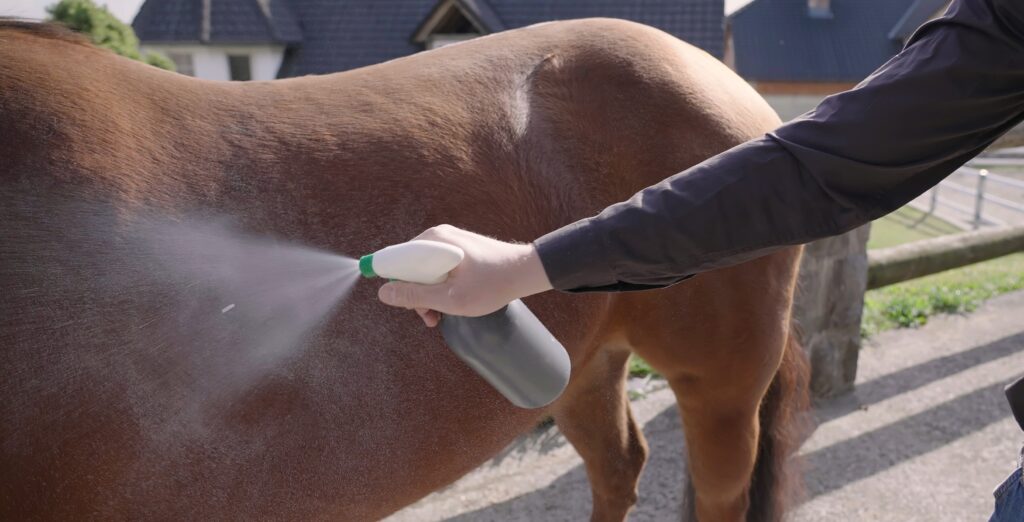
We horse owners spend a hefty sum on fly repellents and insecticides to help our horses cope with flies. Whether you prefer synthetic or all-natural formulas, you can optimize their effectiveness—and your horse’s comfort—with these tips.
Read Product Directions
While this advice seems obvious, a recent product advisor training session revealed that many people over-apply fly sprays. Check the application rate recommended by your fly spray’s manufacturer; some formulas are designed to protect for multiple days and can be applied less frequently.
Check for Skin Sensitivity
We recommend testing any new fly spray on a small area of your horse prior to a full application. Doing so allows you to check for an allergic reaction. If skin reacts, that small test patch is easier to treat.
Brush Away Grime
Brush or clean your horse before applying a fly spray. Not only will sweat, urine and manure attract flies to your horse, it will prevent your formula from creating a proper coating and providing best results.
Rotate Fly Repellents
If your favorite fly spray seems to stop working, give it a break and introduce another type for a while. Flies can become accustomed to the scent of a spray, making it less effective. We recommend bathing your horse between applications of different fly sprays to prevent reaction between active ingredients.
Take a Multipronged Approach
While these tips will enhance the performance of your chosen fly formulas, your horse can also benefit from barriers created by a fly mask, fly sheet and fly boots. Fly traps hung outside your horse’s living environment will help reduce the adult fly population. Similarly, removing piles of rotting leaves or decaying manure will reduce fly breeding grounds. Add some birdhouses and bat houses to lure in these natural insect predators, and you will create a multipronged approach to fly control!
Do you and your horse have a favorite fly spray? Share your photos with us on Instagram and Facebook by tagging @doversaddlery!